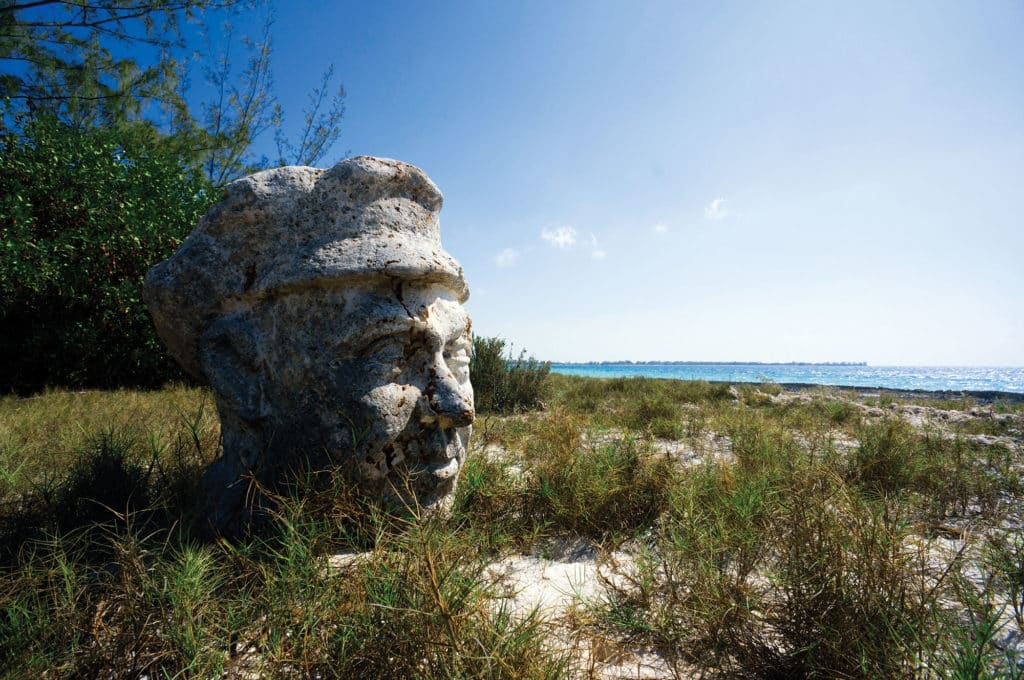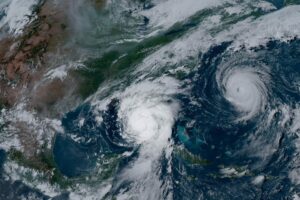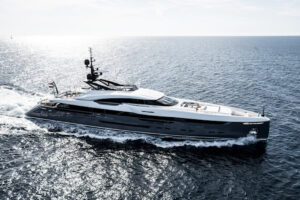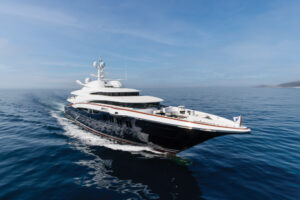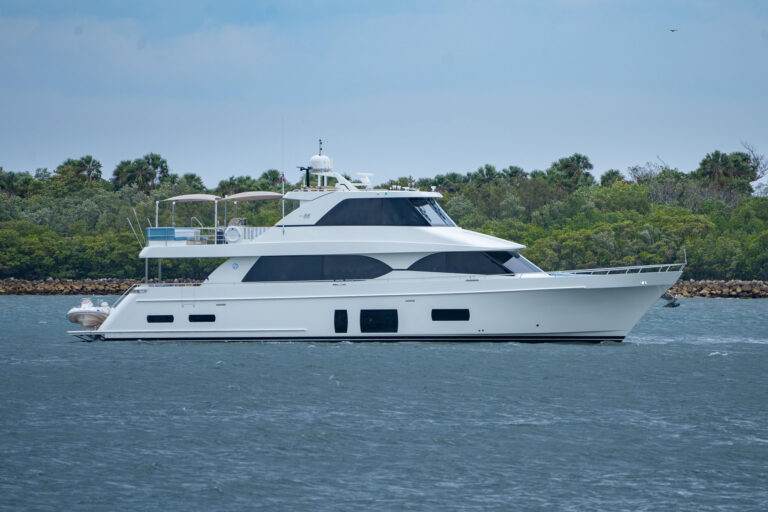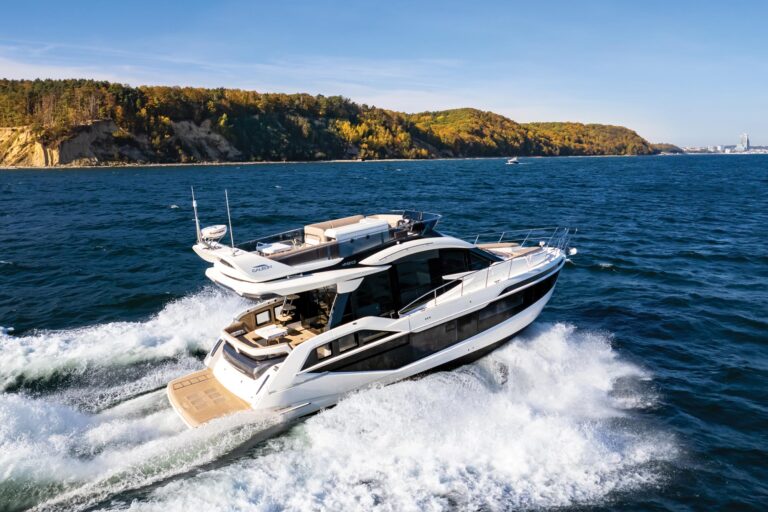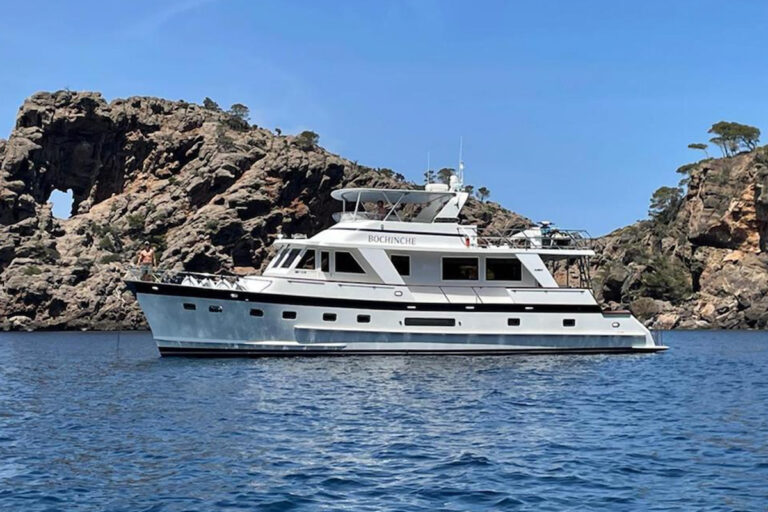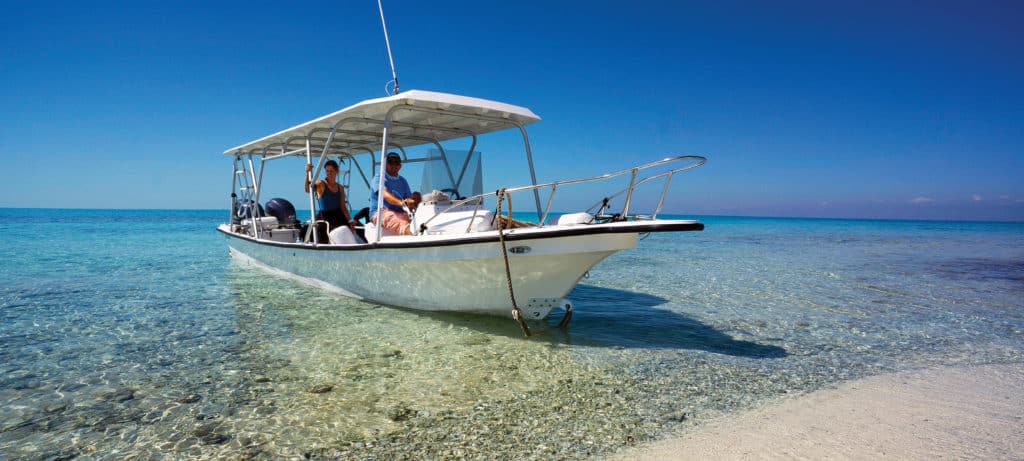
It’s not until day two on the water that I realized what’s different about this cruise, my first in Cuba. In 36 hours along the southern coast of the Caribbean’s largest island, we had crossed paths with just one other vessel: a sailboat at anchor in the lee of a spit of sand so small, it bore no name on the map. The boat caught our eye only because we passed it at night while piloting a dinghy back from a dusk dive. Brightness spilled from the cabin. Out here, it’s the only sign of other people.
We’d started at Playa Larga, technically a port town but, by American standards, nothing more than a parking lot where the Bay of Pigs meets land. A gravel road ended at the sea. There was no restaurant where the sounds of Jimmy Buffett or the smell of grilling burgers beckons. Not even a shop overcharging for ice cream.
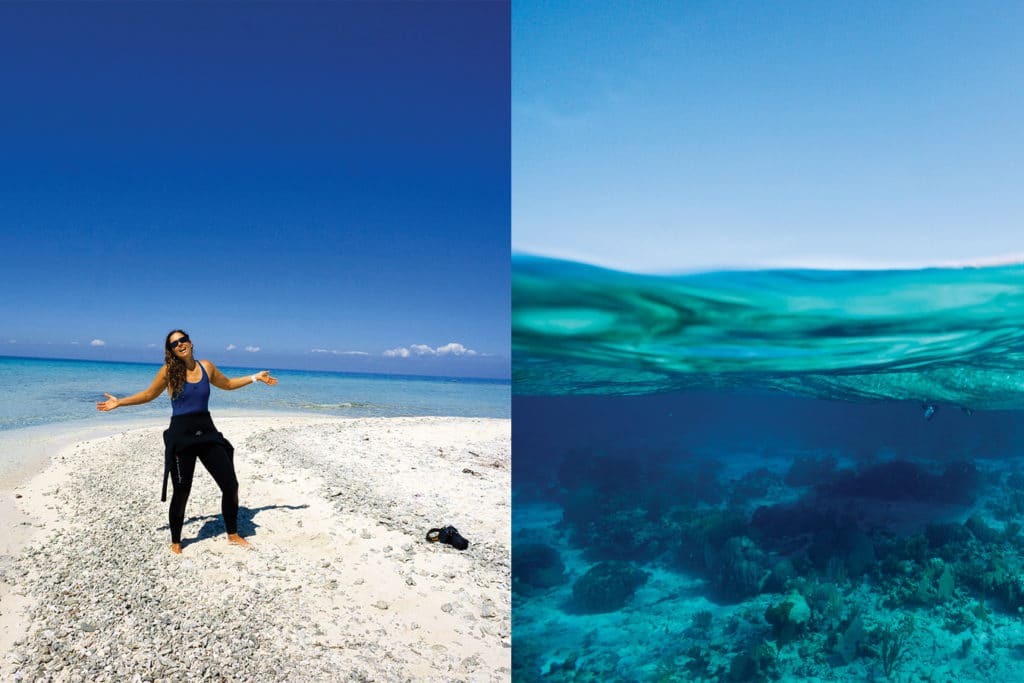
I didn’t care. When I got the chance to cruise here aboard a 100-foot motor-yacht, I couldn’t say yes fast enough. I also didn’t mind the gaps in infrastructure that meant American credit and debit cards weren’t accepted. We could pay only cash in Cuba, so perhaps it was just as well that there were no beers or souvenirs for sale. It was simply better to get underway.
We cruised 10 or so miles out of the Bay of Pigs, then turned west, setting a course for Zapata Peninsula. Underwater, we found Cuba to be a dream. On days one and two, we dropped in GPS coordinates the crew had collected from various sources, including local fishermen. (This is a First World privilege, as handheld GPS devices are illegal for most Cubans to possess.) On the afternoon of the third day, we anchored near a blue hole. The area, like much of the coastline, was no more than 10 to 12 feet deep. The waters were so clear that it felt as if we were skating in midair across sand lined with the wiggle paths of conchs and dotted by the occasional southern stingray.
Then we saw the fish. Hundreds of mutton snapper tightly packed in a circle. Bingo.
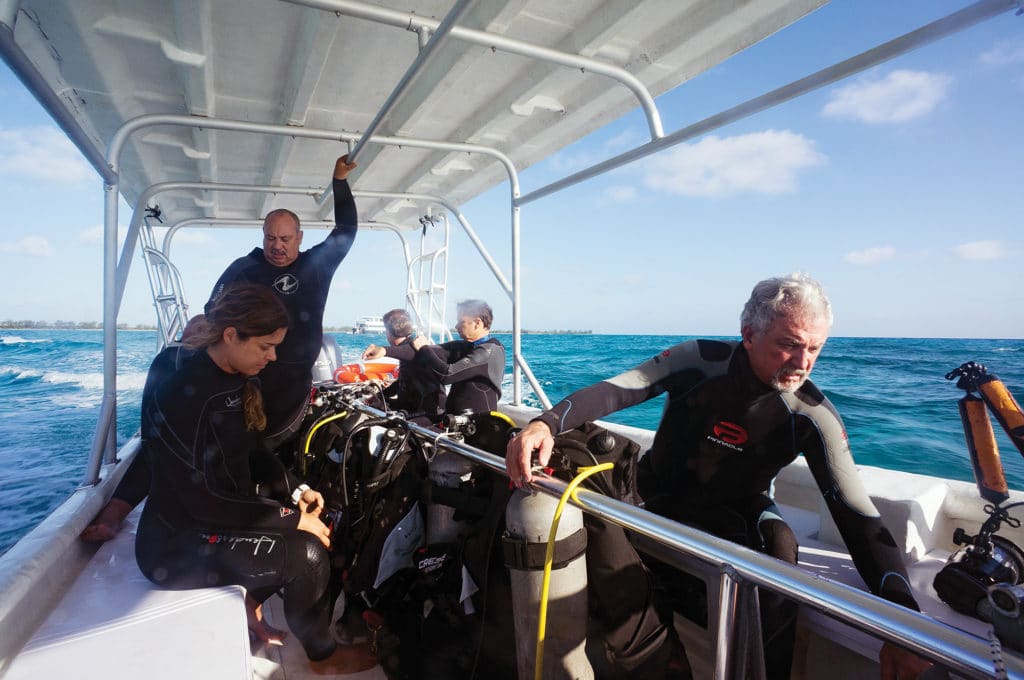
We back-rolled off the dinghy in our dive gear and started swimming along the surface. For the first few minutes, we kept to the shallows, mesmerized by the snapper. But then they parted like curtains, revealing a crack in the blue hole’s wall. The opening was slightly wider than a diver, a fact I realized moments before one of the crew disappeared within. With three kicks of his silver freediving fins, he was gone.
We dived and followed. Inside, our lights swept the cavern’s edges. It was some 300 feet across and bottomed out at 115 feet or so. The edge of my light caught movement, and I turned to see two nurse sharks skittering from view, clambering for higher ground.
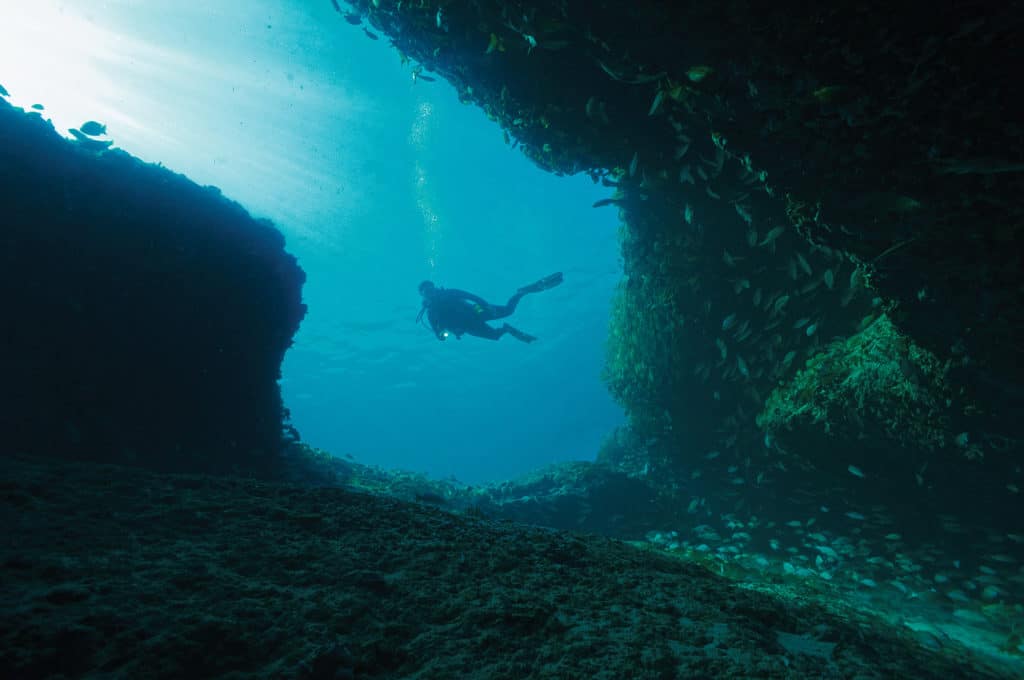
A bit later, back on the boat, lunch was snapper fillets, just caught and fried, plated alongside taro-root fries and coleslaw. One of the crew mentioned what I’d been thinking inside the cave — that he believed we were the first divers ever to squeeze through the crack into that space. The thought sent chills down my spine.
Later that afternoon, we were snorkeling above a patch of reef that made me wonder if we’d traveled back a few decades. Here, in 15 feet of water, was the biggest garden of elkhorn coral I’d ever seen. Elsewhere in the Caribbean, this species is so threatened by hurricane damage, pollution and other human stresses that my experience with it had been limited to underwater photos taken in the ’80s. But here, it was stunning. The coral are mustard yellow and covered in small bumps like the breading of chicken nuggets. Each formation resembles a satellite dish pointed to the heavens. And there are 30 or so elkhorns, all thriving. I wouldn’t have believed it if I hadn’t taken in the sight.
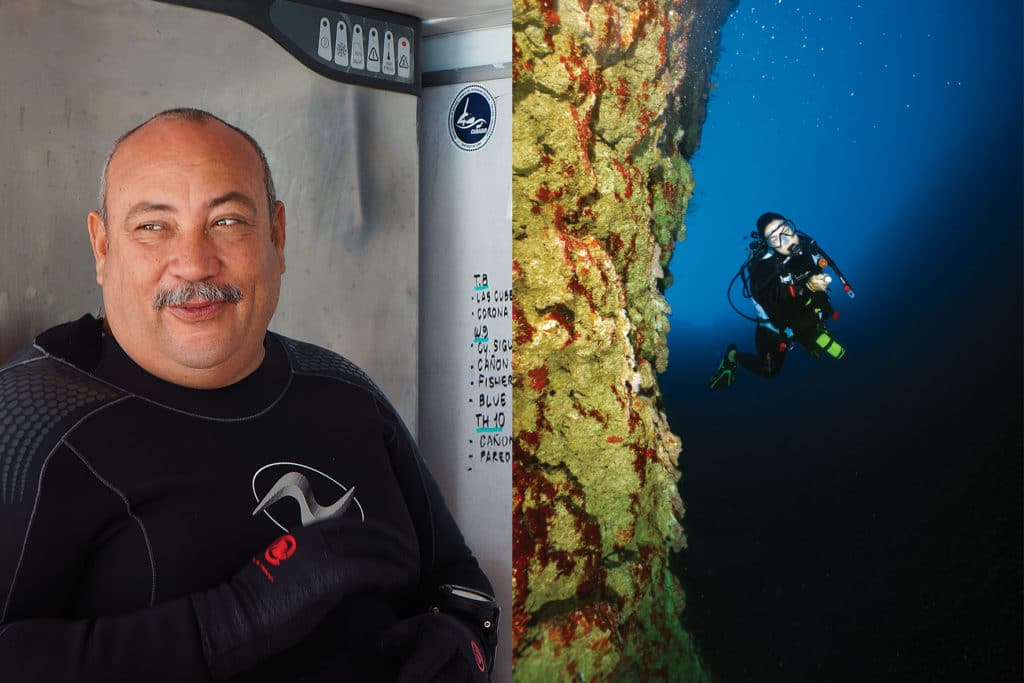
Later, at the beach on Cayos de San Felipe, I sunk my toes into the sand, which was white, picture-perfect and coarse, thanks to the sea’s endless churning away at shells. Soft spots exist on this beach as well. With each step, my feet plunged 6 inches. Palm trees grow in occasional clusters, but Caribbean pines claim most of the shore. What little detritus there was carried in by waves, made me realize how long it might have been since another soul was here.
Then we saw a head — a statue whose face had broken off and now rested at its own feet. Apparently, it was Ernst Thälmann, leader of the Communist Republic of Germany during the Weimar Republic in the early 1900s.
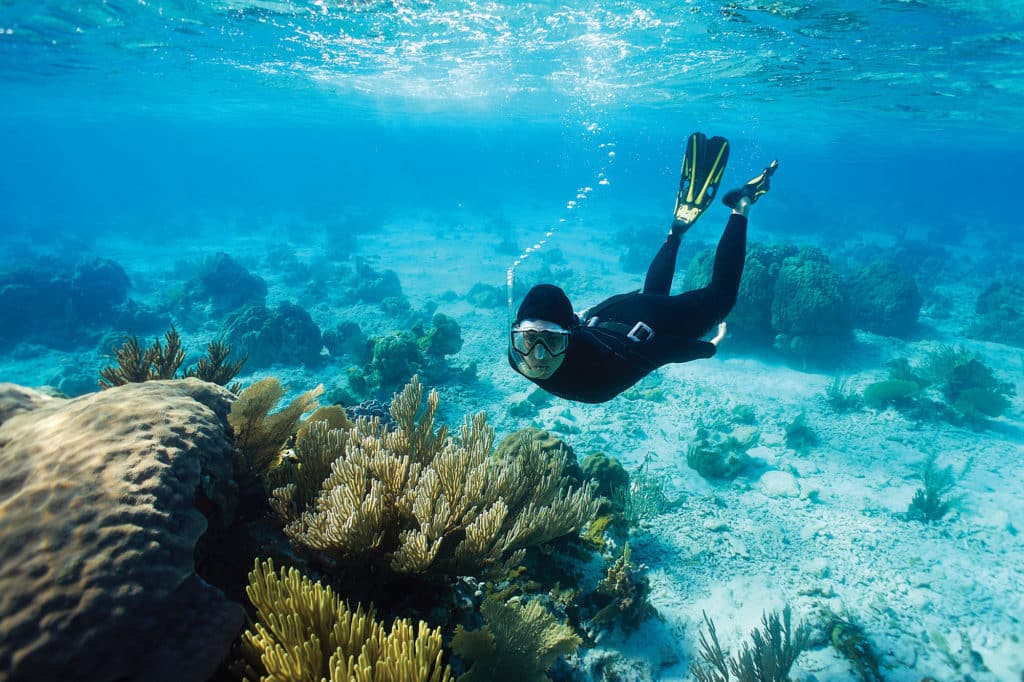
I couldn’t help but smile at this scene. The beach, like much of this coast, was pristine — a word bandied about often but almost never truly applicable. Given that Cuba’s development is so far behind some of the more tourist-heavy Caribbean islands, it made sense that the coral and beaches are so untouched, just waiting to be seen. And where mighty figures of communism once loomed, these days they’re rendered powerless, just visible on the edges.
What’s to come for Cuba is anyone’s guess, and hopefully, this island will never catch up to the more touristy parts of the Caribbean. For now, she’s every bit the idyllic cruising escape: quiet, unassuming and, most of all, beckoning.
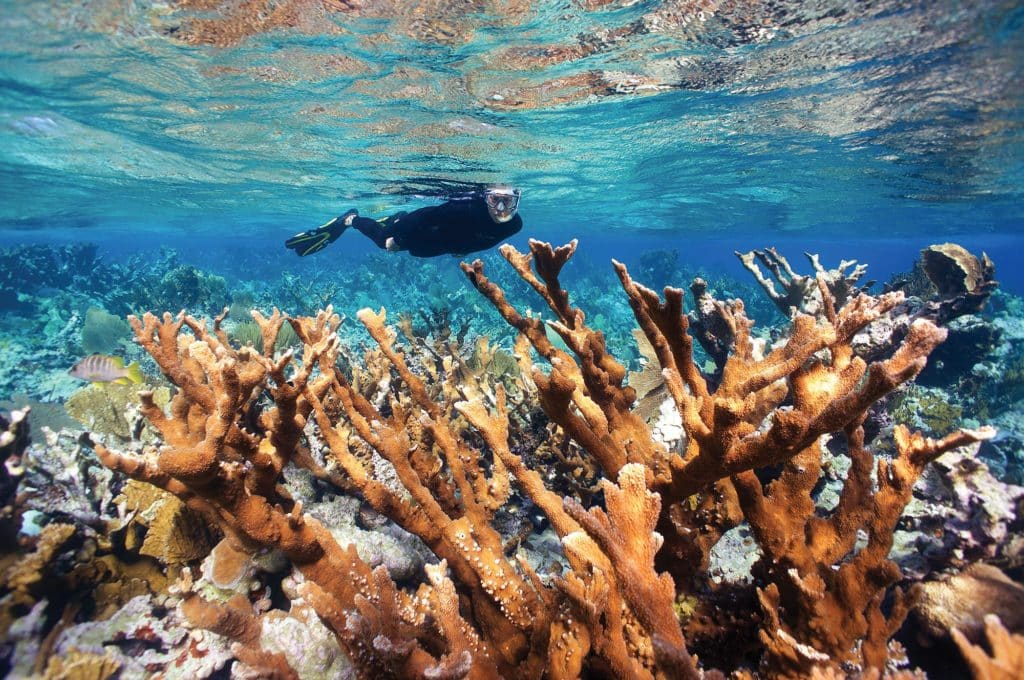
Cash Is King
Devise an itinerary in advance and have a rough idea of what you’ll spend, as no ATMs accept American-held credit or debit cards. (Even spending cash is tricky; American dollars are converted at a premium to Cuban pesos, so convert U.S. cash to euros or another currency prior to arrival, then try to change to pesos at the handful of exchange outfits in Cuba.) In Havana, about half the locals speak English fluently, and downtown crime is almost unheard of.
Cubans are happy, welcoming people. At least five times, I was stopped in Havana and asked if I was American, only to be told by the stranger that he or she “loved America.”
Not a diver yet? Get your certification online today with PADI to start exploring wrecks like these and so much more.
